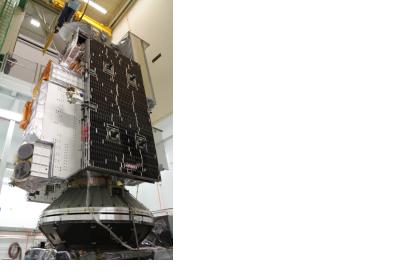The GPM satellite, created to to measure the type and intensity of precipitation, has arrived at its launch site in Japan after a flight from NASA's Goddard Space flight Center in Maryland. The spacecraft's microwave imager and dual-frequency radar will measure the type and intensity of precipitation, peering inside clouds and studying everything from winter storms to hurricanes. The special focus of interest for scientists is to track cyclones as they move from the tropics to higher latitudes. This allows them to see how the storms evolve as they move through different climate zones.
The GPM Core mission follows the joint U.S.-Japanese Tropical Rainfall Measuring Mission launched in 1997. The spacecraft, which will weigh 8,500 pounds at the time of launch, was built at the Goddard Space Flight Center in Greenbelt and will be launch from Japan presumably on February 28 aboard an H-2A rocket. The new satellite will cover more of the planet than the former satellite from a high-inclination orbit 250 miles above Earth. NASA shipped the Global Precipitation Measurement Core Observatory to Japan last week inside a U.S. Air Force C-5M Galaxy transport plane after a delay of several week due to the U.S. government shutdown in October.

